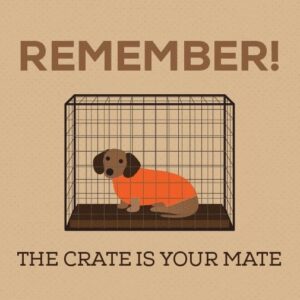CRATE REST IS VITAL
It is crucial to strictly limit your dog’s activity in a bed-rest den, commonly called “crate rest” if your dog –
- is displaying the Signs and Symptoms of an IVDD episode
- has been has been diagnosed with IVDD and you have opted for Conservative treatment.
- has undergone IVDD Surgery.
Crating your dog will prevent further damage to the spine and and most importantly allow much needed time to heal.
Whoever said crate resting a Dachshund was easy needs to be hunted down and locked in a room full of IVDD sausages without earplugs for a week!
When a human is admitted to a hospital for back surgery they are confined to a bed, topped up with medication and hauled out of bed as soon as possible for physiotherapy. Easy right?
Try telling that to a Dachshund.
Let’s face it, hearing that your dog needs to be confined is up there with most dog owners’ worst nightmares. When their freedom is taken away through injury or illness, dogs can become anxious and destructive, and this is exacerbated when they are not used to being confined.
What is crate rest?
Crate rest means your dog is in his crate 24/7, except for toilet breaks, physiotherapy or maybe some quiet cuddle time. NEVER allow your dog to roam free during crate rest! During crate rest, your dachshund is ALWAYS carried to and from its crate. Always use 2 hands to pick up your dog. One hand under the chest and one supporting the back end, keeping the spine aligned. Never let your dog’s rear end hang down when picking up or putting down.
For example, to toilet your dog, pick your dog up from its crate, attach a collar and lead, walk outside, place the dog down and wait. If your dog is paralysed, this will also involve using a sling; sling one end, lead the other. Remember to also pop your dachshund on a lead and wrap it around your wrist etc. during cuddle time, particularly on the lounge. Even dachshunds with IVDD think they are invincible when the doorbell rings!
How does crate rest help my dog?
When humans sprain or injure their joints the rule of thumb is RICE (rest, ice, compress and elevate). With dogs it’s not possible to do this; so instead, we restrict their movement as much as possible, and administer anti-inflammatories and pain relief so that the damaged discs can regenerate and heal.
What do I need?
A metal crate with a roof. We suggest 36″ is a good size, small enough to keep your dog safe and large enough for them to move around to eat and also use a pee pad at one end.
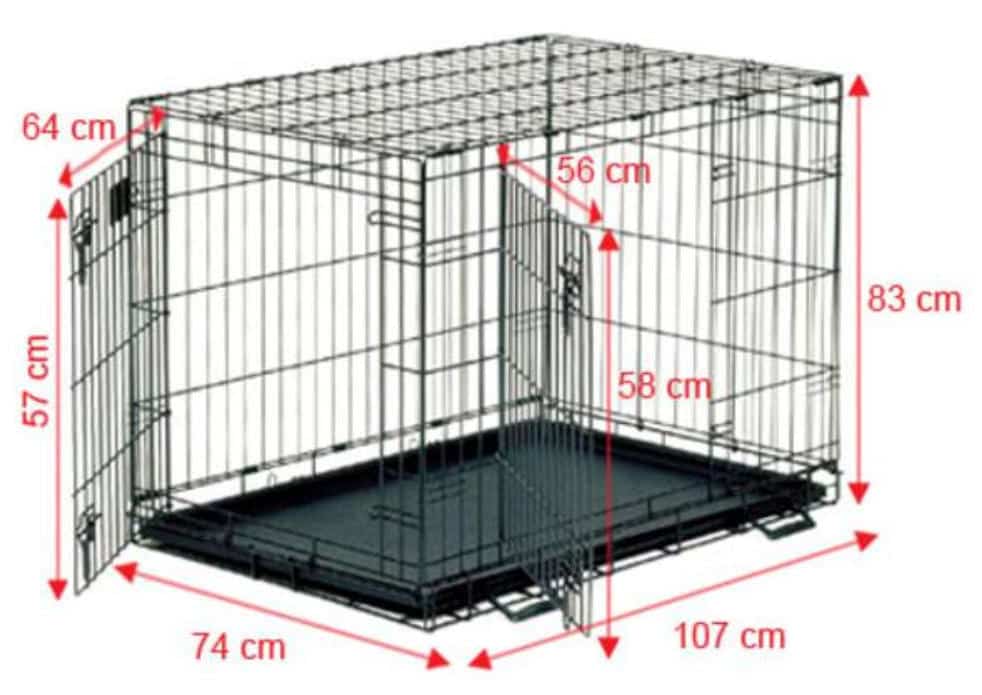
Facts to consider
- Crating/pen resting your dog will prevent further damage to the spine and most importantly allow much-needed time to heal
- Every dog is different. Some will embrace crate rest and others will HATE it.
- Dogs aren’t humans, they WILL believe they are Super Dog when under the influence of heavy-duty pain relief. Nothing is impossible!
- There are different methods to restrict rest depending on your dog.
- It is imperative to understand the importance crate rest also plays in preventing further injury and relapse, therefore, promoting healing and recovery.
What is best for my dog?
When your dog is at the Vet/Specialist it will be contained in a metal enclosure with a door. Dog crates are designed to replicate a dog’s natural den and as such can provide them with a place of refuge. Therefore, a metal crate with a roof is recommended, 36″ is a good size, small enough to keep your dog safe and large enough for them to move around to eat and use a pee pad at one end.
A metal crate with a roof. We suggest 36″ is a good size, small enough to keep your dog safe and large enough for them to move around to eat and also use a pee pad at one end.
Why metal?
Past experience has shown dachshunds are great escape artists. Soft crates, and even baby pens, are no contest for a desperate sausage! Of course, these items can play a part in therapy as you progress, however, start off with a ‘trusty old’ metal crate with a roof.
How long?
Conservative – The rule of thumb is that dogs who have a suspected IVDD episode, and have no neurological involvement, should be crate-rested for 4- 6 weeks (or longer). Dogs who have any level of neurological involvement should be crate rested for AT LEAST 8 WEEKS. Not 10 days, not 2 to 3 weeks. A crate rest period that short is a recipe for another, worse episode.
Surgical – It’s essential that after surgery your dog is confined to a crate, as it is exactly what they need to allow nature to do its work and allow your dog to heal. It is paramount for this to be done to ensure maximum recovery. They are still fragile, and a lot of the swelling and inflammation needs to settle down which requires patience and time. So make sure you make that doggie boudoir nice and comfortable and cozy, as this is going to be a home for your dog to heal in the coming weeks.
Crate hate?
If your dog simply doesn’t play nicely with a Crate you can also consider a Child Play Pen. These also work well but beware if you have a jumper.
Recovery suites are another excellent concept – a pen with a crate inside! This a good solution when you have more than one hound, after all our dachshunds are pack animals.
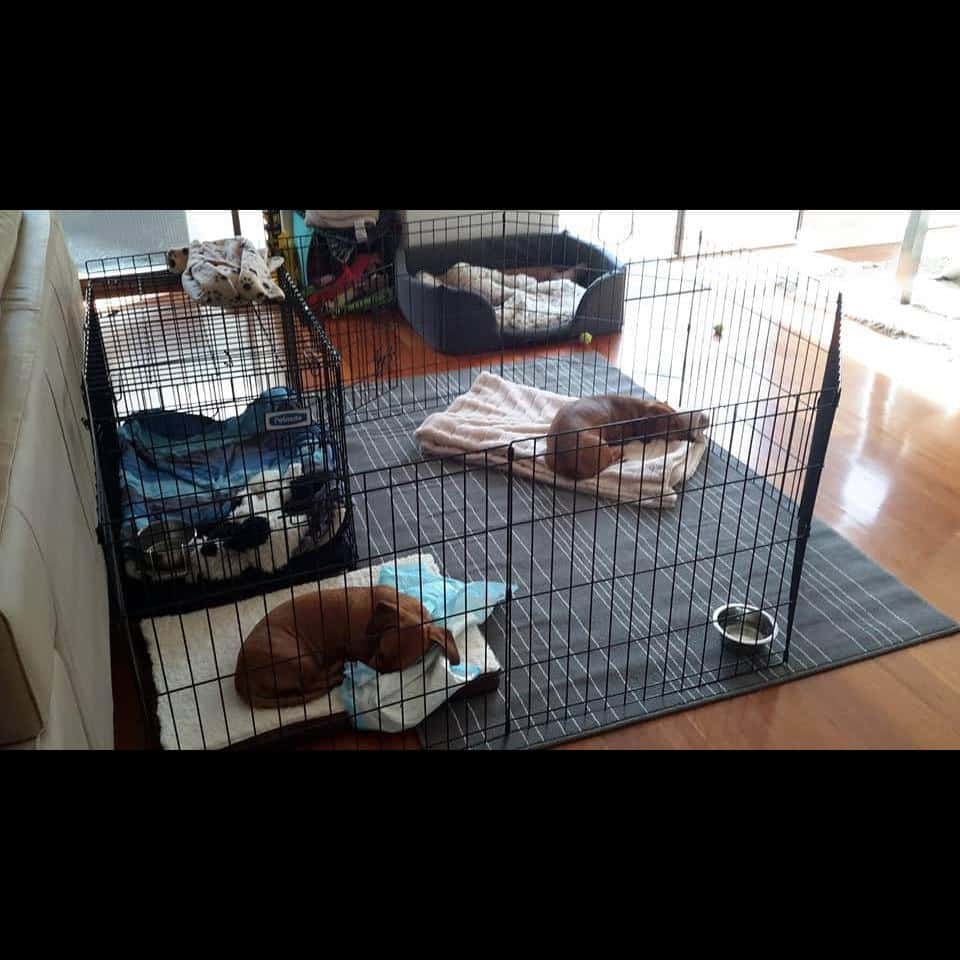
What other crate accessories might I need?
- A comfy crate pad, nothing too soft or spongy. Remember your dog has a bad back and needs support. Lay an absorbent easily washable material underneath your dog; bath mats are quite handy for this.
- Favourite blanket and toys; anything to keep them occupied.
- Attach a water bowl to the side of the crate, enabling easy access and less spillage. Coop cups are great for this purpose.
- A sheet/blanket to cover over the pen – dogs are den animals and covering over the crate (even one end) will help them feel safe and calm.
- If your dog can still toilet on its own to pee, a pad at one end of the crate is handy.
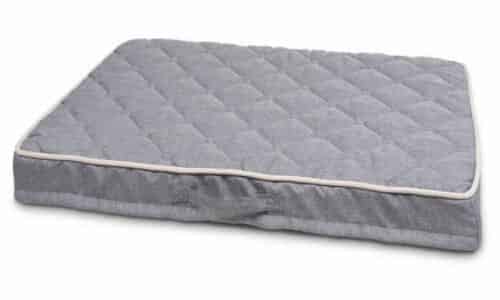

Is mobility an issue?
Use a dolly or wheels underneath the crate for ease of moving from room to room
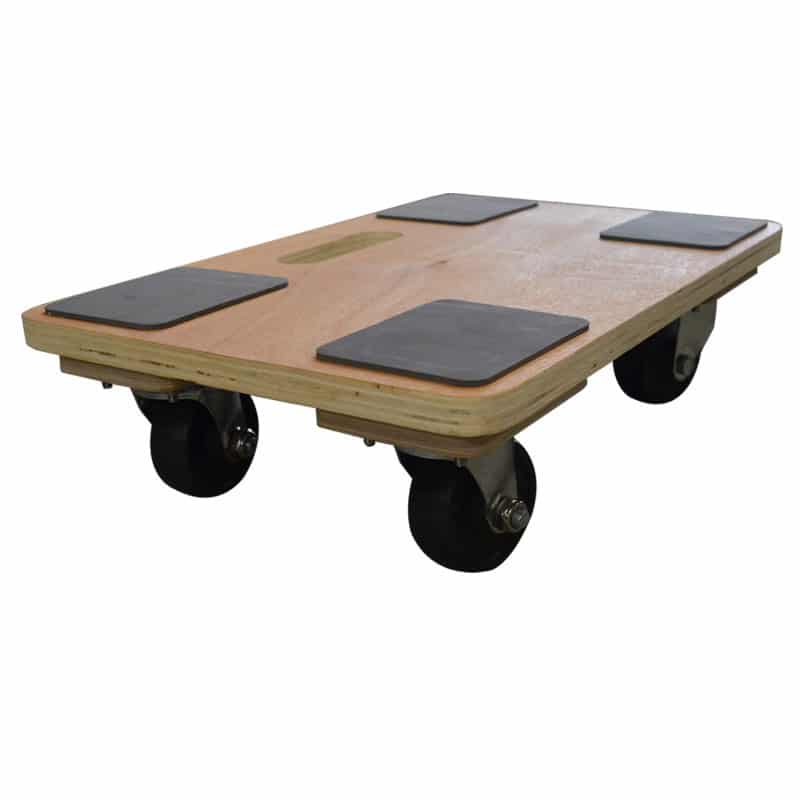
Without a doubt, following strict crate rest is definitely about tough love on our part, but it must be done if you want to give your dog the best opportunity to get better. Crate rest is often harder on us than it is on the dog, and it plays an extremely vital role in ensuring your dog has the best chance to recover from a disc episode.
It is imperative to understand the importance crate rest also plays in preventing further injury and relapse. Sadly, we have heard many stories about dogs who have experienced relapses when strict crate rest was not followed diligently. With such stories in mind, DISA exists to offer you the support and guidance during a disc episode and the subsequent recovery time, to help you remain diligent.
Whilst we have heard sad stories about relapses, we have also heard many amazing stories about how crate rest has helped many dogs regain the ability to use their legs again after surgery, and also in instances when surgery was unable to be performed. Crate rest may be difficult at the time and lengthy, but DISA assures you, it is well worth the time and the effort.
If your dog has never been crate trained before, there is a good chance he or she is going to give you that typical dachshund “I am not impressed, I hate you and there is absolutely nothing wrong with me” look. Also, we humans are prone to feeling more regretful and upset about the whole event than our dogs. But don’t be fooled. Crate rest is exactly what your dog needs in order for nature to work its magic and let the healing process begin.
We welcome you to reach out to our Volunteers via Phone Support for a supportive ear and gentle guidance if needed.
CONTACT IVDD PHONE SUPPORT
Remember, we’ve got your back!
